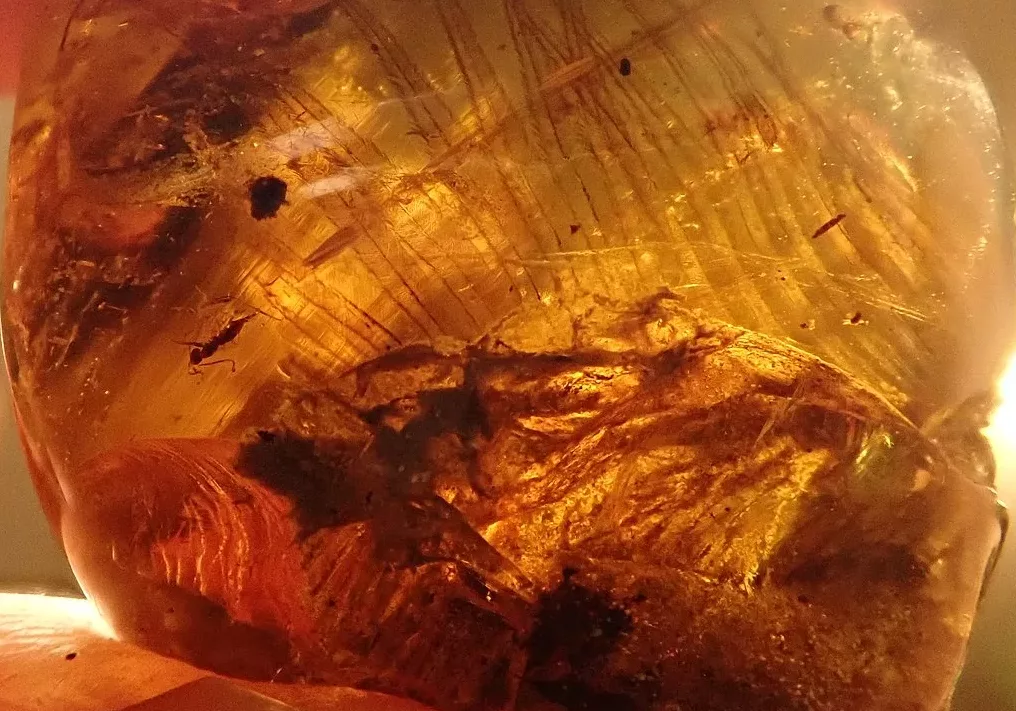A feathered dinosaur specimen encased in amber from the Cretaceous, from Hukawng Valley, Myanmar. Similar specimens found encased with beetles formed the basis for the reported study. Image credit: 419aka, CC0, via Wikimedia Commons
A set of remarkable fossils from northern Spain has shed new light on the feeding habits of ancient beetles. A team, jointly led by Dr. Ricardo Pérez de la Fuente of the Oxford University Museum of Natural History, have demonstrated that beetles from 105 million years ago fed on the discarded feathers of dinosaurs.
Feathers, contrary to popular belief, were widespread amongst dinosaurs. It has been known for decades that birds are a type of dinosaur, belonging to a group known as Paraves, a group of dinosaurs that also included famous dinosaurs such as Velociraptor. Birds are commonly known to palaeontologists as avian dinosaurs. However, many dinosaurs, both avian and nonavian, are fossilised with spectacularly preserved feathers and there is some suggestion that filament-like feathers even represent the ancestral condition for all dinosaurs.
The specimens studied by Dr. Pérez de la Fuente and his colleagues contain many feathers, from an indeterminate dinosaur, preserved in amber. They also contain at least six distinct beetle larvae. Crucially, there is also evidence that the beetle larvae were feeding on the feathers. Beetle bite-mark shaped damage on the feathers indicate that the beetle larvae were almost certainly feeding on them.
“This would be the first ever known example of insects feeding on discarded feathers in the fossil record”
Two other examples of feather feeding insects are known, but both of these represent parasitic insects feeding on a feathered host. The authors, however, believe that their find represents something different – insects feeding on discarded feathers. This would be the first ever known example of this in the fossil record.
For one thing, Dr. Pérez de la Fuente and his team were able to identify these long dead insects. Features of their mouthparts allowed them to be assigned to the beetle family Dermestidae, or “skin beetles”, a group which has over 1700 living species. They are mostly scavengers, and whilst most species feed on dead animal carcasses, many species live in the nests of birds and feed on the waste that the birds leave behind, including feathers. The team also identified fungal spores present on the feathers, indicating the feathers had undergone some kind of decay, so were not attached to the host, but were still in close association with the beetles.
The team’s findings reveal the very first known occurrence of insects feeding on feathers in nests, an ecological niche that is widespread today. They even show that this remarkable behaviour was exhibited by the very same beetles over 100 million years ago as it is today. These incredibly important findings, the team say, “shed light on the evolutionary importance of early symbiotic relationships between arthropods and vertebrates”.





